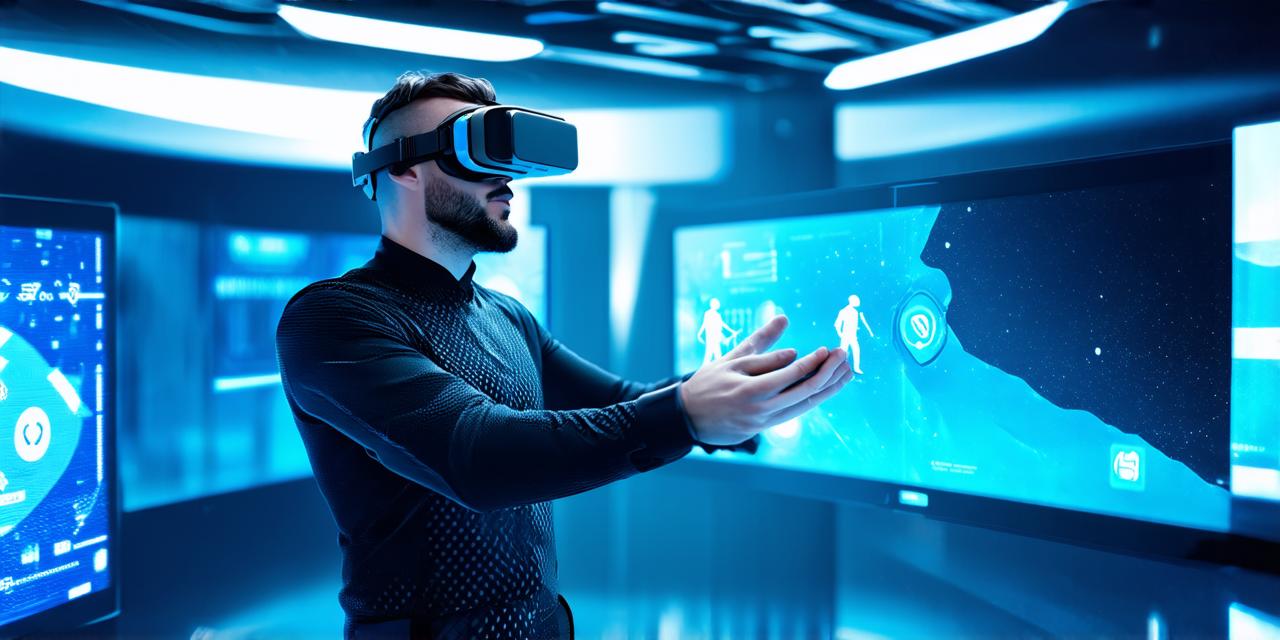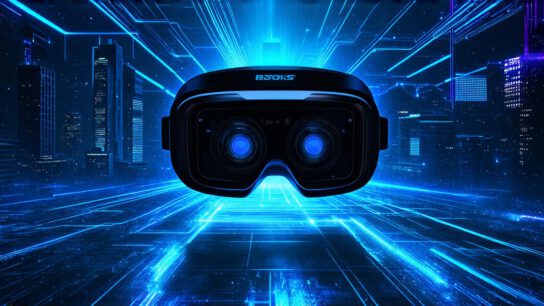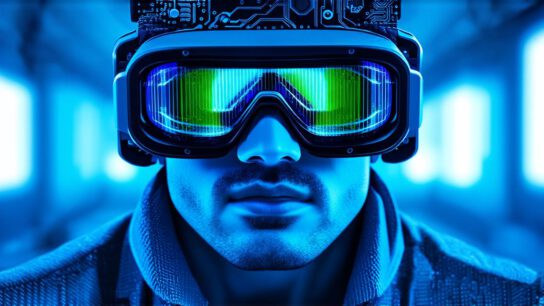Virtual reality (VR) technology has come a long way since its inception, and it’s now poised to revolutionize the way we interact with the digital world. From gaming to training and entertainment, VR is rapidly gaining popularity across various industries.
The Evolution of Virtual Reality Technology
Virtual reality technology dates back to the 1960s when researchers first started exploring ways to create immersive digital experiences. The earliest form of VR was the head-mounted display (HMD), which allowed users to view a 3D environment through a headset. However, these devices were bulky and expensive, making them impractical for widespread use.
In the 1990s, advances in computer graphics and processing power led to the development of more sophisticated VR systems. These systems used tracked sensors to monitor user movements and provide a more realistic experience. However, they still required a high level of technical expertise and were limited in their ability to interact with the real world.
The turn of the millennium saw the advent of more affordable and accessible VR technology. The introduction of smartphones and other mobile devices allowed developers to create apps that could be accessed through a headset or smartphone screen. This made it possible for anyone with access to a device to experience virtual reality, leading to a surge in popularity.
Today, virtual reality technology has advanced significantly, with improvements in display resolution, tracking accuracy, and haptic feedback. These advancements have led to more immersive and realistic experiences, making VR an increasingly popular choice for gaming, education, training, and entertainment.
The Current State of Virtual Reality Development
Virtual reality development has come a long way since its early days, with a growing number of tools and platforms available to developers. There are now several game engines that support VR development, including Unity and Unreal Engine, as well as specialized software for creating 3D models and animations.
The rise of mobile VR has also led to the development of new platforms and frameworks, such as ARKit and Vuforia, which allow developers to create apps that can be accessed through a smartphone or tablet. These platforms have made it easier than ever for developers to create VR experiences on the go, leading to a surge in mobile VR app development.
The growth of virtual reality technology has also led to new opportunities for developers, including the ability to create custom experiences for specific industries and use cases. For example, healthcare providers are using VR to train medical professionals, while architects and interior designers are using it to create immersive showrooms for clients.
The Future of Virtual Reality Development
Virtual reality technology is expected to continue advancing in the coming years, with improvements in display resolution, tracking accuracy, and haptic feedback. These advancements will lead to even more immersive and realistic experiences, making VR an increasingly popular choice for gaming, education, training, and entertainment.
One area where virtual reality is expected to see significant growth is in the field of mental health. Research has shown that VR can be an effective tool for treating conditions such as anxiety, depression, and post-traumatic stress disorder (PTSD). As VR technology continues to improve, it’s likely that we will see more specialized tools and platforms developed for this purpose.
Another area where virtual reality is expected to see growth is in the field of tourism and travel. With advancements in display resolution and tracking accuracy, VR can provide a highly immersive experience that allows users to explore new places and cultures from the comfort of their own homes. This could lead to a significant shift in the way people travel and experience different parts of the world.
Case Studies: How Virtual Reality Technology is Being Used in Real-World Applications
Virtual reality technology is already being used in a variety of real-world applications, from gaming to training and entertainment. Here are some examples of how VR is being used in these areas:
- Gaming: Virtual reality has revolutionized the gaming industry, providing players with immersive experiences that were previously impossible. Games such as “Beat Saber” and “Job Simulator” have become hugely popular, with millions of users around the world enjoying the thrill of virtual reality gaming.
- Education: Virtual reality is being used in education to provide students with immersive learning experiences that can help them better understand complex concepts. For example, medical students are using VR to simulate surgeries and practice their skills, while history students are using it to explore ancient civilizations in a highly immersive way.
- Training: Virtual reality is being used in training for a wide range of industries, including aviation, military, and healthcare. For example, pilots are using VR to simulate flight scenarios and practice their skills in a safe environment, while medical professionals are using it to train for procedures such as surgeries and emergency treatments.
- Entertainment: Virtual reality is being used in entertainment to provide users with highly immersive experiences that can transport them to new places and worlds. For example, the VR experience “The Labyrinth” allows users to explore ancient ruins and solve puzzles in a highly immersive way, while the VR experience “Annihilation” allows users to explore a post-apocalyptic world filled with mutated creatures.
Expert Opinions: What the Future Holds for Virtual Reality Development
We asked several experts in the field of virtual reality development what they thought the future held for this rapidly growing technology. Here are some of their insights:
- Dr. Mark Okrand, a renowned computer scientist and VR expert: “Virtual reality has come a long way since its early days, and we’re only at the beginning of what it can do. With advancements in display resolution, tracking accuracy, and haptic feedback, I believe we will see even more immersive and realistic experiences in the coming years,”
- Dr. Karen Dillard, an assistant professor of virtual reality at Stanford University: “Virtual reality is already being used in a variety of industries, including gaming, education, training, and entertainment. As the technology continues to improve, I expect we will see even more specialized tools and platforms developed for these purposes,”
- Dr. Sarah Krum, a virtual reality researcher at MIT: “Virtual reality is poised to revolutionize the way we interact with the digital world, and I believe it has the potential to transform industries as diverse as healthcare, tourism, and education,”
FAQs: Answering Your Questions About Virtual Reality Development
What is virtual reality?
Virtual reality is a technology that allows users to experience a simulated 3D environment through a headset or other device. It provides an immersive and interactive experience that can be used for gaming, education, training, and entertainment.
What are the current limitations of virtual reality technology?
The current limitations of virtual reality technology include high cost, limited interactivity, and issues with motion sickness and discomfort. However, these limitations are expected to improve as the technology continues to advance.
How is virtual reality being used in healthcare?
Virtual reality is being used in healthcare to treat conditions such as anxiety, depression, and PTSD. It’s also being used for medical training, allowing professionals to practice procedures in a safe environment.
What are some examples of virtual reality games?
Some examples of virtual reality games include “Beat Saber,” “Job Simulator,” and “Annihilation.” There are many other games available that provide highly immersive gaming experiences.
Summary: Virtual Reality Technology is Changing the Way We Experience the World
Virtual reality technology has come a long way since its inception and continues to evolve at an incredible pace. From gaming and entertainment to education and healthcare, VR is transforming the way we interact with the digital world and each other. As advancements in display resolution, tracking accuracy, and haptic feedback continue to improve, the possibilities for virtual reality are endless.



